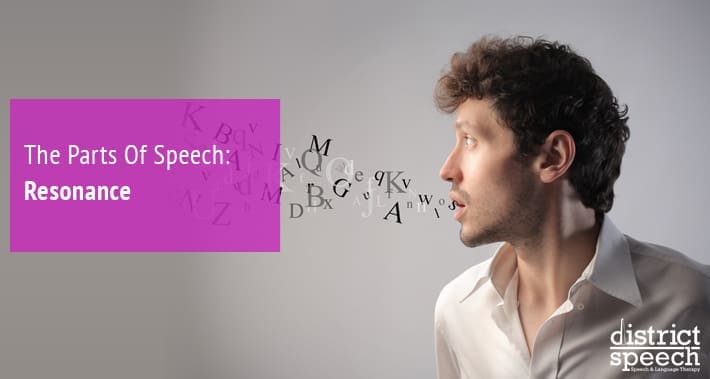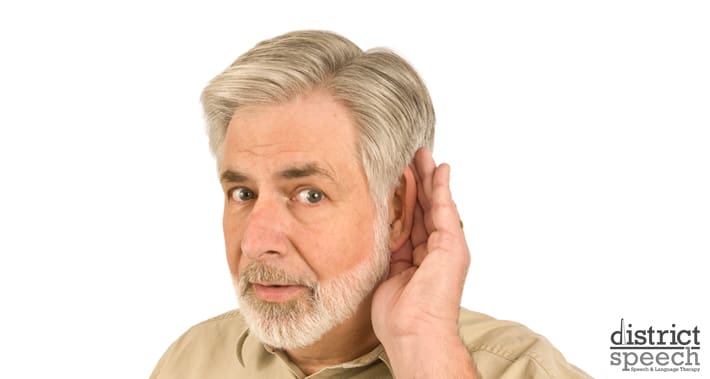
Have you ever heard rocks falling in a cave?
The sound generated from even just a few pebbles can bounce off the walls of the cave so that what you hear is sharper, deeper, or louder.
This is resonance – the sound is resonating inside the cave.
This is a bit like vocal resonance, and how resonance speech therapy works.
The sounds you make using your larynx changes as it moves through your airway.
You create speech sounds based on the shapes you make with your teeth, tongue, and even the tip of your nose.
What people hear is a result of how you shape sound as it leaves your body.
Your vocal resonance can affect everything from the volume of your speech to the clarity of your consonants.
If people often ask you to repeat yourself or speak louder, it may be a resonance issue.
Our Washington DC speech therapists can help.
To learn more about vocal resonance and how you shape the way you sound, keep reading below.
How Does Vocal Resonance Work?
When we say “that person has a nasal voice”, “that person has a deep voice”, or “that person sounds like they have a cold” we are usually referring to different types of vocal resonance.
Vocal resonance is the way that sound vibrations are shaped in your vocal tract when you speak.
Your vocal tract includes three resonating cavities:
- Your nasal cavity, the air filled space slightly above and behind your nose, above the roof of your mouth
- Your oral cavity, the space inside your mouth
- Your pharynx, the muscle lined inside of your throat
The velopharyngeal valve, the closure formed by your upper palate and the sides of your throat, also plays a key role in vocal resonance.
When you speak, you create sound using your vocal folds (or vocal cords, same thing), which are muscles in your larynx, or voice box.
This sound created by your vocal folds passes through your vocal tract – the oral cavity, nasal cavity, and pharynx – which acts like a filter to shape the sound.
The shape and size of your nasal cavity, oral cavity, and pharynx, the position of your tongue, the amount you open your mouth, and the closure ofyour velopharyngeal valve all have an impact on the sound that others hear you make.
The filtered sound is your perceived vocal resonance.
What Does Normal Resonance Sound Like?
Your natural resonance will vary depending on the language you’re speaking, how your valves and muscles function, your gender, and the languages you learned to speak first or speak most often.
Normal resonance refers to the balance of sound energy coming from your oral cavity and your nasal cavity depending on the sounds you’re trying to make.
Think of the treble and bass sliders on a stereo – some people like a lot of bass, others like to hear the treble.
There’s a wide range of ways to balance the sound, but if you push the sliders too far, you might not really be able to hear the music anymore.
Just like the perfect balance for a song, normal resonance is the right balance of nasal and oral sound energy for the sound you want to make.
In English most vowels and vocal consonants are oral sounds, so you would expect more sound energy in the oral cavity when an English speaker says something in English.
Other languages have different balances of oral and nasal sound energy.
A person speaking in their second or third language might sound like they are at the edges of, or even outside of what is considered normal resonance by native speakers of that language.
RELATED: Speech Therapy For Accent Modification And Reduction
There are no fixed standards for what normal resonance sounds like.
It varies within an acceptable range, and our perceptions of normal resonance exist on a spectrum.
Speech Therapy Concerns Affected By Resonance
Resonance disorders occur when there is an imbalance in how much oral and nasal sound energy you produce when speaking.
These imbalances can sometimes make your speech difficult to hear or understand, which is when speech therapy can be helpful.
Resonance disorders can be the result of structural issues, like a muscle that doesn’t contract the way you need it to, or a hole that allows sound to pass in or out of a vocal cavity without your control.
Resonance disorders can also be the result of functional causes, like issues with motor planning.
1. Hypernasality
Hypernasality is what happens when your velopharyngeal valve doesn’t close properly while you’re speaking, letting air into your nasal cavity.
As a result, you will sound very nasal, like you are speaking through your nose.
Think of characters like Steve Urkel or Fran Drescher.
Anyone can have hypernasality in their voice, and there are a few conditions that can produce it.
Hypernasality can occur as a result of:
- The way you learned to articulate certain sounds
- Neurological issues, including cerebral palsy
- Issues with your pharyngeal valve
- Physical condition like cleft lip or cleft palate
- Speaking in a second language that is less nasal than your first language
2. Hyponasality
Hyponasality is a bit like sounding stuffed up all the time – it’s what happens when there is too little nasal sound energy when you speak.
Blockage in your nasal cavity can prevent sound from moving through your nasal cavity, leading to a lack of nasal resonance on nasal sounds.
To understand this, think about m, n, and ing sounds.
If you speak with hyponasality, m comes out as b, n as d, and ing as ig.
Structural causes of hyponasality include velopharyngeal insufficiency, cleft lip, cleft palate, swelling related to your tonsils or a deviated septum, or temporary congestion from a cold or allergies.
Functional causes include conditions that impact your motor planning.
If you have a hearing impairment, it may seem like you speak with hyponasality.
In this case, however, the absence of nasal sound might be due to a lack of auditory feedback rather than a blockage
3. Cul De Sac Resonance Disorder
A cul de sac resonance disorder has to do with sound getting ‘trapped’ as it exits part of your vocal tract.
You may have cul de sac resonance disorder if:
- Sound enters your larynx, pharynx, oral cavity or nasal cavity but something blocks it at the exit
- Your speech sounds muffled or like it’s trapped in a bubble
- You speak at a low volume and have a hard time changing this
- You have a tinny resonance and indistinct speech
Like other resonance disorders, cul de sac resonance disorder can be caused by a structural blockage or a functional issue in your vocal tract.
Cul de sac resonance disorder can also be the result of:
- Hearing loss that reduces auditory feedback
- Nasal blockage like polyps or a deviated septum
- A mouth opening that is too small
- Oronasal fistula, or an opening in the upper gums
- Swollen tonsils or glands
- Dysfunction of the velopharyngeal valve
4. Voice Training For Transgender People
Resonance can also influence how we perceive the gender of a voice to be, and transgender voice therapy can help you modify your resonance.
A traditionally feminine coded voice is a voice that has a brighter resonance.
That means it’s softer, lighter, less buzzy, and resonates higher in the body.
A traditionally masculine voice, on the other hand, is heavier, buzzier, and it almost sounds louder (even though it isn’t).
That’s because a traditionally masculine voice resonates in your chest.
Your chest is the largest part of your body regardless of your gender.
Going through testosterone driven puberty causes you to have a more traditionally masculine voice.
Transgender hormone replacement therapy for trans women doesn’t reverse that, unfortunately.
Voice therapy for transgender women teaches you how to manipulate your larynx as well as your tongue and other parts of your oral cavity to brighten your resonance.
Transgender men don’t have the same issue.
Some transgender men are happy with the way testosterone changes their voice.
However, speech therapy for transgender men can help you darken your resonance.
Voice training for nonbinary people can go in either direction, depending on which puberties you’ve been through and how you’d like to modify your voice.

Book Your Appointment With District Speech Today
Do you often have to repeat yourself in conversation?
Do you find people focus on how you speak rather than what you have to say?
Do you want to change your vocal resonance so that you can speak in a clear and confident voice?
Book your appointment with District Speech today so we can help you make yourself heard.
1300 I St NW, Suite 400 E,
Washington, DC 20005
- https://g.page/districtspeech
District Speech and Language Therapy specializes in speech therapy, physical therapy, and occupational therapy solutions, for both children and adults, in the Washington D.C and the Arlington Virginia areas.